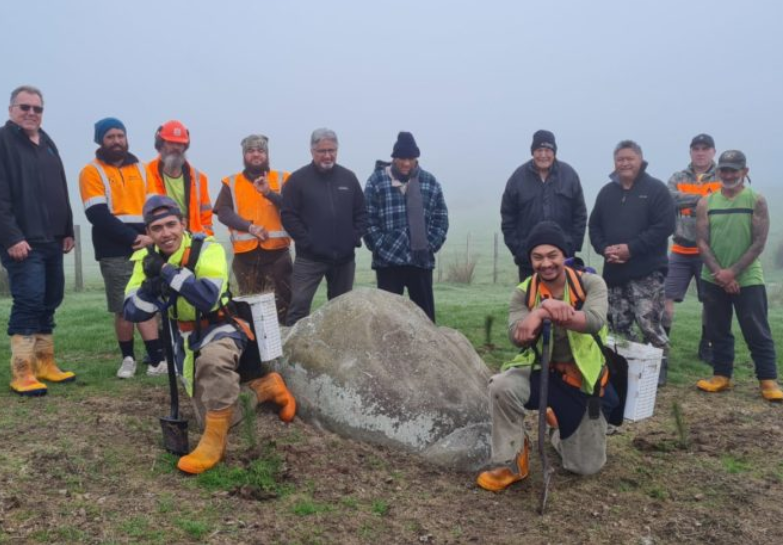Managing our farmlands includes reviewing the way we use that whenua to ensure we’re best protecting the environment and waterways.
This includes taking stock off steep whenua to prevent soil and sediment runoff, and instead using that whenua for planting.
Our rural team is currently underway with a programme to plant 148ha in pine trees across our Hangawera, Whatawhata and Rotowaro farms. At Hangawera this has included planting a 10m border of manuka to ensure that existing native bush is protected. When the pines are harvested in 27 years’ time, mana whenua will have the option to either replant in pines or further extend native plantings.
Eric Pene, a representative for Ngaati Wairere who is working with TGH, says the iwi have taken a long-term approach with the intention of handing on kaitiakitanga of the whenua to tamariki mokopuna.
“Both Wairere and TGH are looking at the farms (within our rohe) on a case by case basis when it comes to environmental and economic outcomes. We understand the farms need to make a financial return but equally there needs to be an environmental balance to protect or reintroduce the ecological systems that once thrived,” says Eric.
“The restoration of the whenua also allows the whaanau to tell their histories and engage with the whenua again. Hangawera in particular is a key part of the past and future of Wairere and this is why the farm is held in high regard.”
As Eric says, this programme is about protecting te taiao while also improving the commercial performance of our farm operations. So, at the same time, we’re working alongside our colleagues at Waikato-Tainui to support career development by engaging Tane Mahuta Forestry to deliver their exceptional training programme to tribal rangatahi.
The bonus is that rangatahi learn the art of forestry on their own whenua.
Our whakaahua (photo) was taken on the morning of the karakia at Hangawera before planting began.

